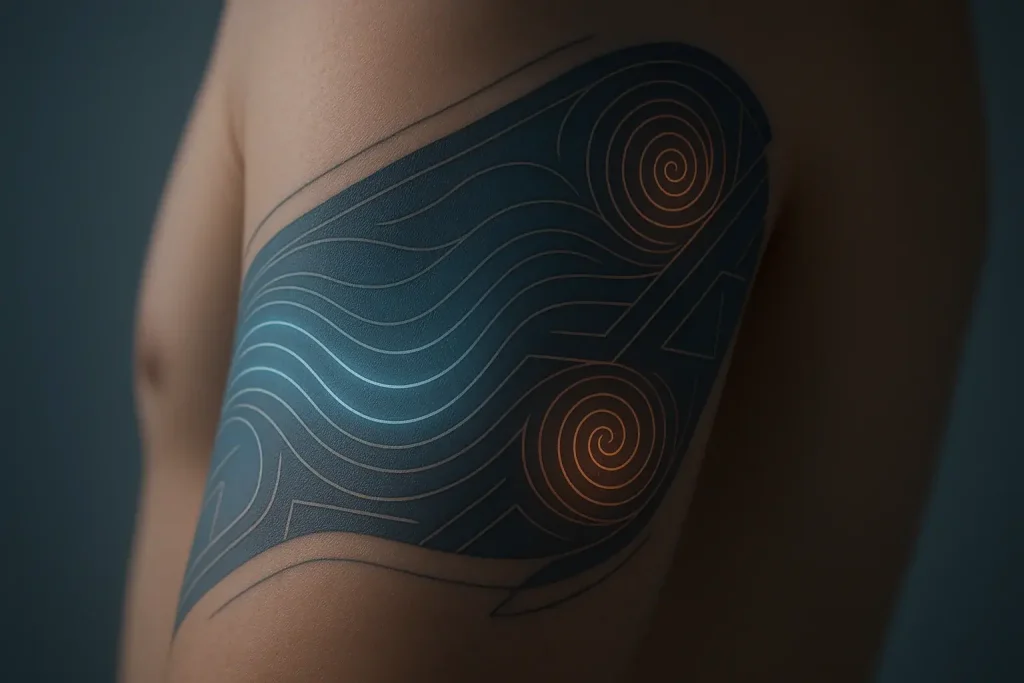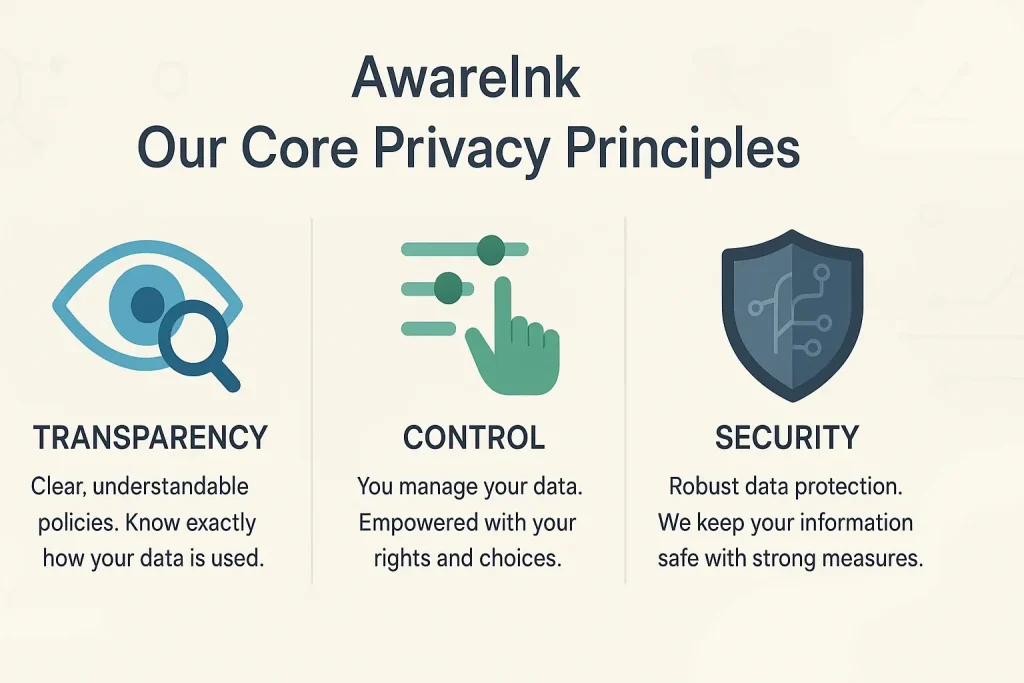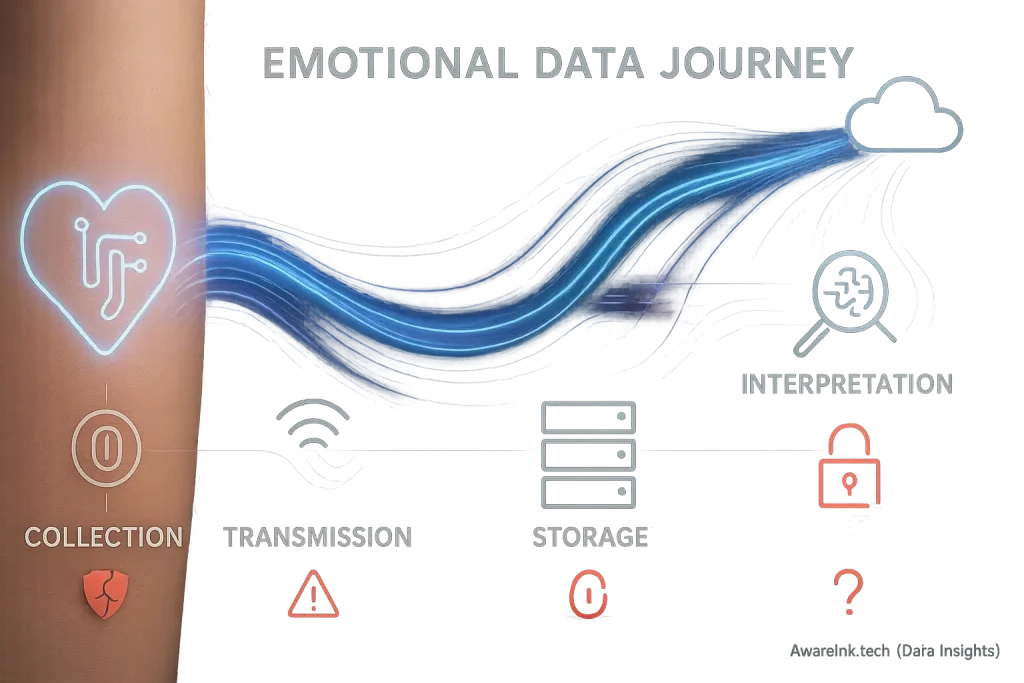Keeping the Vibe Alive: Why Power Matters for Your Mood Tattoo
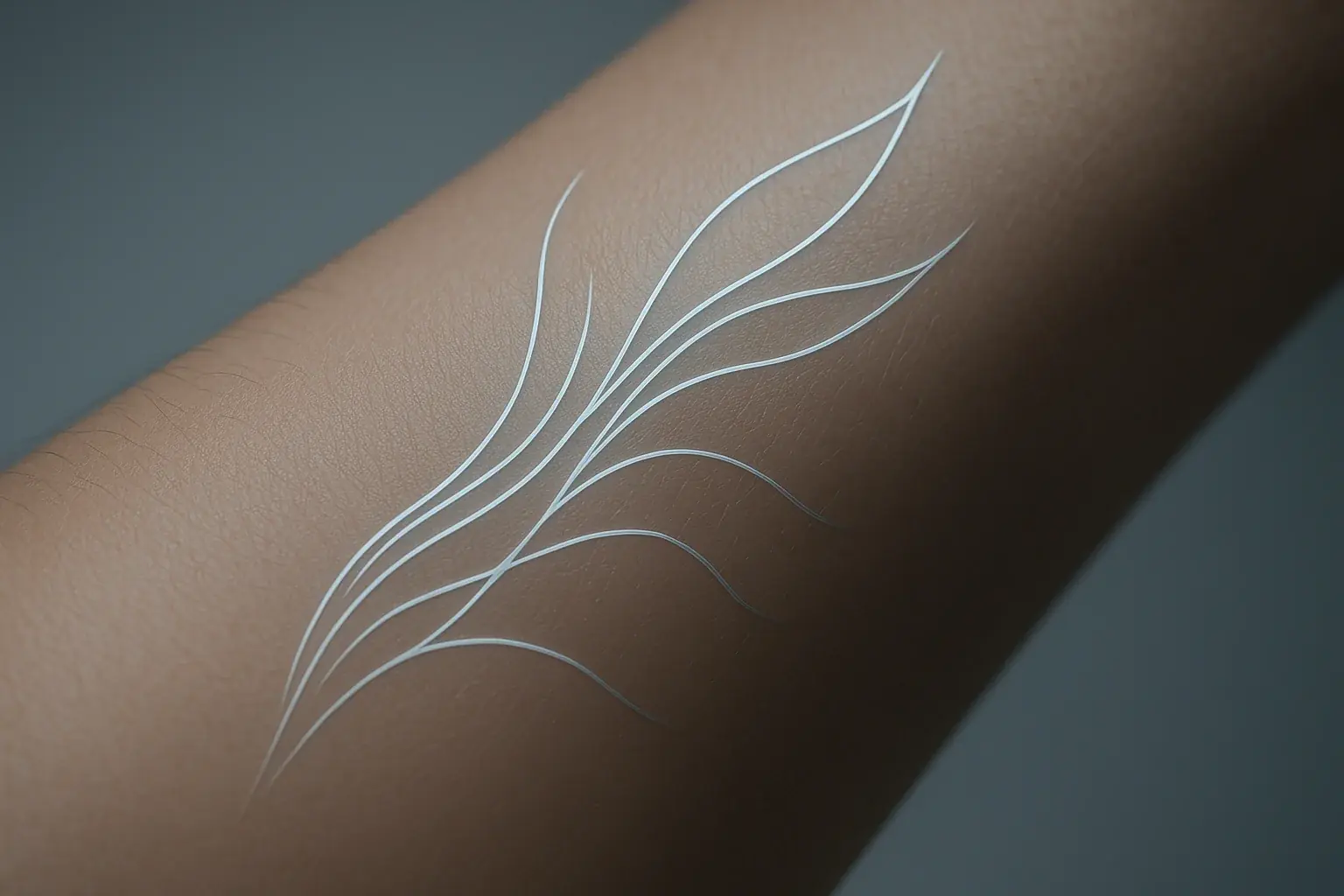
Phone dead again? Frustrating. Smart tattoos face a similar power challenge. This 'invisible' technology demands constant energy. Its discreet, continuous function depends entirely on it. As users, we anticipate consistent feedback, not another battery icon causing anxiety. A mood tattoo without power? Useless.
The core dilemma? Thinness battles capacity. More flexibility means less power space. This is a fundamental trade-off. Users rightly expect constant, effortless feedback from their mood tattoos. This demand drives innovation in powering these on-skin devices. The challenge for manufacturers involves merging sleek aesthetics with reliable, all-day energy.
How do these tiny marvels stay juiced? AwareInk.tech sees real power breakthroughs. Think thin-film batteries. Or convenient wireless charging. Body energy harvesting even taps your own power. Our analysis unpacks these clever methods for you. This knowledge helps your smart tattoo choice.
Power in a Paper-Thin Package: The Promise of Thin-Film Batteries
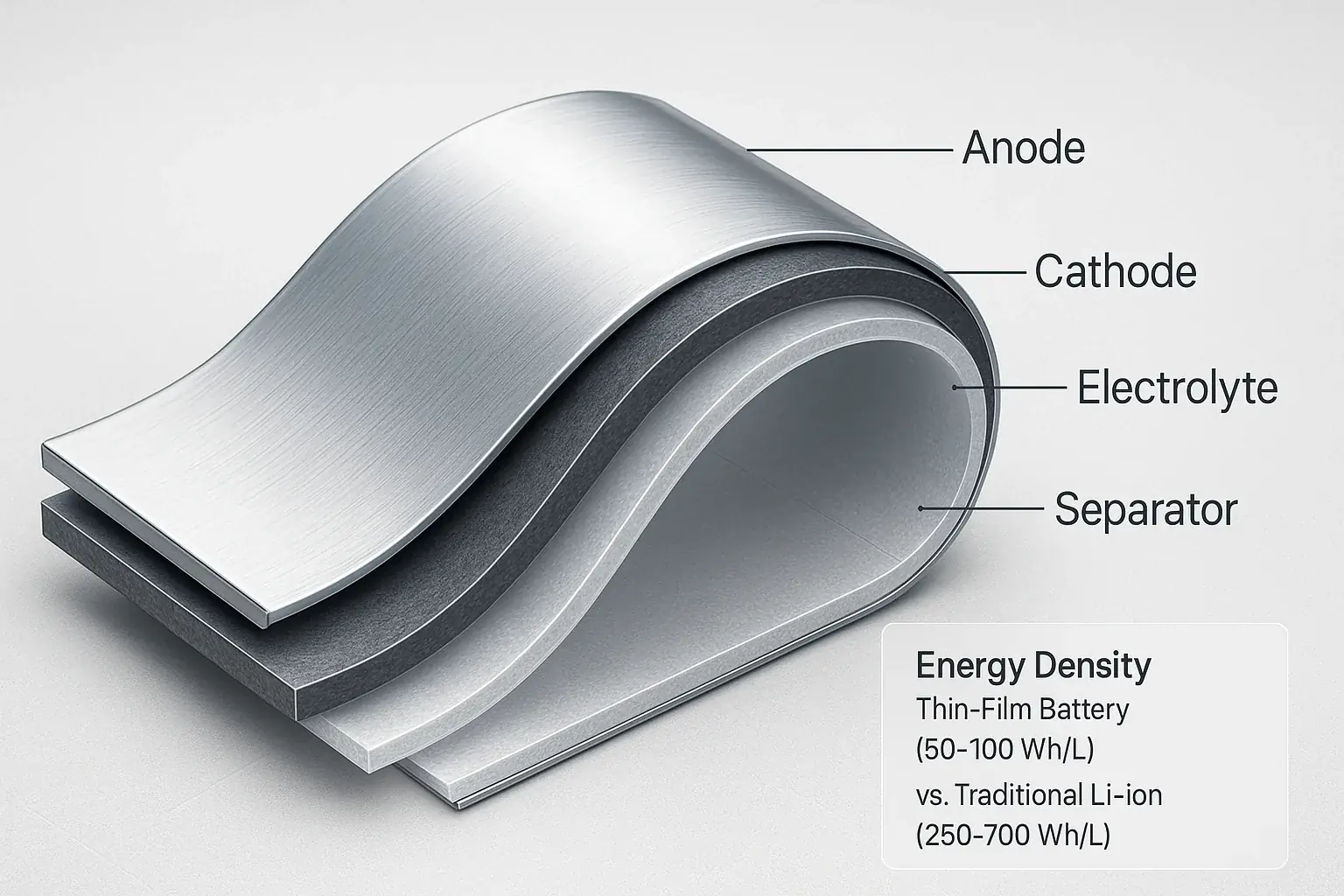
Thin-film batteries represent ultra-slim power sources. They enable truly flexible electronics. Imagine a battery as thin as a credit card. Or even paper-thin. That is the core promise of thin-film technology for your smart tattoo. This unique characteristic allows for genuinely discreet, body-contouring wearable power solutions.
How do they achieve this remarkable thinness? These batteries function using precisely layered electrochemical components. Manufacturers deposit these ultra-thin films onto flexible substrates, almost like a printing process. This method integrates energy storage directly into a smart tattoo's delicate structure. The tattoo then conforms seamlessly to your body's movements and curves.
The slim profile is attractive. A true innovation. But what is the real story on power? AwareInk.tech's analysis of early concepts and battery specifications reveals a critical point. Current thin-film batteries simply store less energy than their traditional lithium-ion counterparts. Their operational lifespan between charges can also disappoint initial user expectations. Many imagine a 'set-it-and-forget-it' tattoo experience. The potential reality? Daily, or even bi-daily, charging might be necessary to support full features. This frequent tethering could be a major drawback for some users. Manufacturing these advanced power cells also faces challenges, impacting final device cost.
Is there hope for improved performance? Absolutely. Researchers worldwide actively pursue advances in thin-film technology. New material combinations promise greater energy density for longer tattoo operation. Novel manufacturing techniques aim to reduce production complexity and overall cost. The goal remains clear: more enduring, affordable power for future smart tattoos. This field advances quickly, holding potential for significant improvements.
Charging Without Wires: The Magic of Wireless Power Transfer for Tattoos
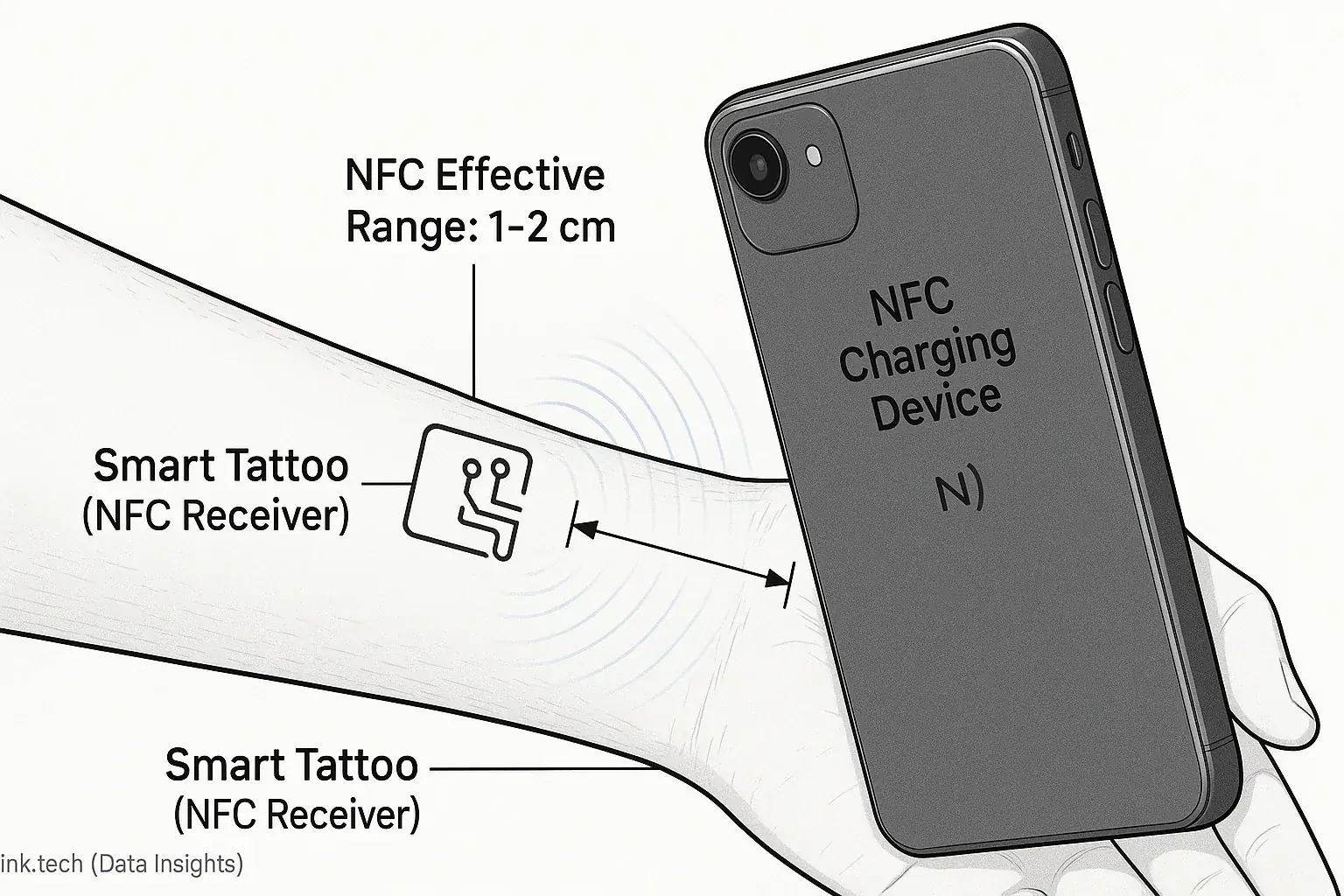
Wireless charging offers power. It eliminates physical connections for smart tattoos. Inductive charging employs magnetic fields. Modern phone chargers use this method. Near Field Communication (NFC) transfers minimal power. It operates over mere centimeters.
Smart tattoos could benefit from this technology. Wires become unnecessary. Convenience is the major draw. Imagine your phone topping up your tattoo. A quick wave does it. This vision suggests effortless power. But is it truly that simple for users?
Proximity is the unspoken catch. Wireless charging requires extreme closeness. Power does not magically come from thin air. Your tattoo needs direct contact. Or very near placement to a specific charging surface. This reality impacts any 'always-on' promise. Effortless, constant power is still a future goal, not a current widespread capability.
Power transfer efficiency presents further hurdles. Small, flexible receivers on skin face difficulties. Skin itself absorbs some electromagnetic energy. This absorption reduces delivered power to the tattoo. It potentially causes slight warming too. AwareInk.tech's analysis highlights these practical user-side realities.
Power from You: Energy Harvesting for Self-Sustaining Tattoos
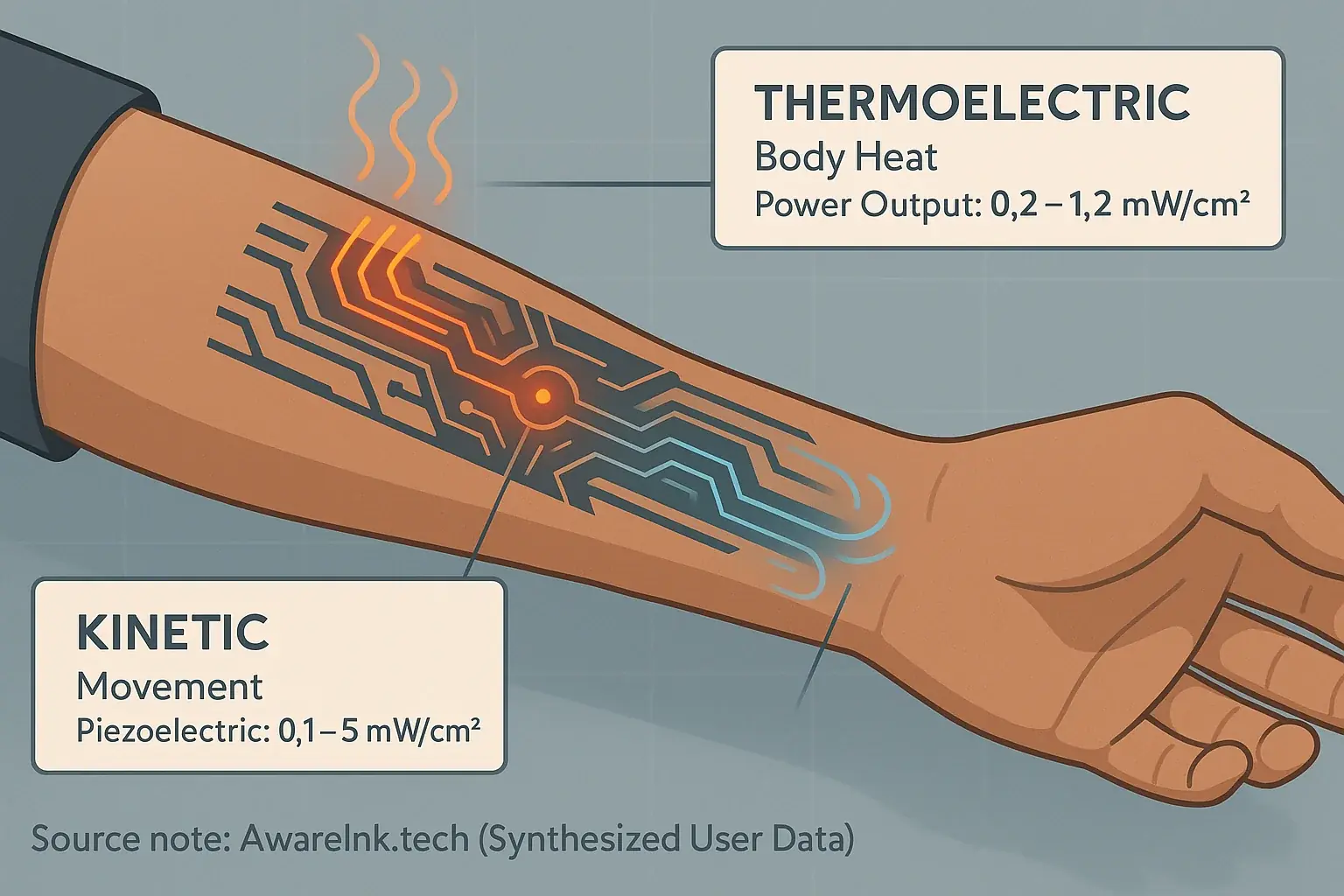
Energy harvesting offers a thrilling future: smart tattoos powering themselves. Forget charging. Forever. Thermoelectric generators could convert your body heat into electricity. Kinetic harvesters would capture energy from your every move. This technology promises true device independence.
Imagine your tattoo always active, simply by you living your life. No plugs. No charging pads. Zero power worries. Sounds like pure science fiction, doesn't it? This 'set-it-and-forget-it' convenience is what many users dream about for truly integrated wearable tech. It represents ultimate freedom in personal electronics.
So, why aren't these self-powering marvels common? Here's an unspoken truth many discover. The power harvested from the human body is currently minuscule. Thermoelectric devices might yield only 0.2 to 1.2 milliwatts per square centimeter from body heat . Kinetic systems, converting motion, also struggle with low efficiency and the variable nature of human movement . Powering complex smart tattoo functions this way presents a significant hurdle. This area sees constant research, but practical, widespread application awaits key breakthroughs.
Which Power Method Suits Your Mood Tattoo Lifestyle?
What's Your Power Priority?
Select your top 2-3 most important factors for a smart tattoo's power source:
That tool likely showed you something important. No single power method wins for everyone. Your personal needs define the best choice. Convenience, discretion, or environmental impact will guide your decision. AwareInk.tech's research underscores this highly personal fit.
Consider the whole charging routine. This involves more than the power source. How often is charging needed? Daily? Weekly? Will that process disrupt your daily flow? AwareInk.tech finds users ponder these questions for daily integration.
Another point from AwareInk.tech's analysis: 'green' energy harvesting sounds appealing. Its eco-credentials attract many. However, this method might struggle with power-hungry tattoo features. Practicality sometimes must balance pure idealism. This is a frequent consideration for advanced personal tech.
Beyond the Plug: Implications for Smart Tattoo Usability & Longevity
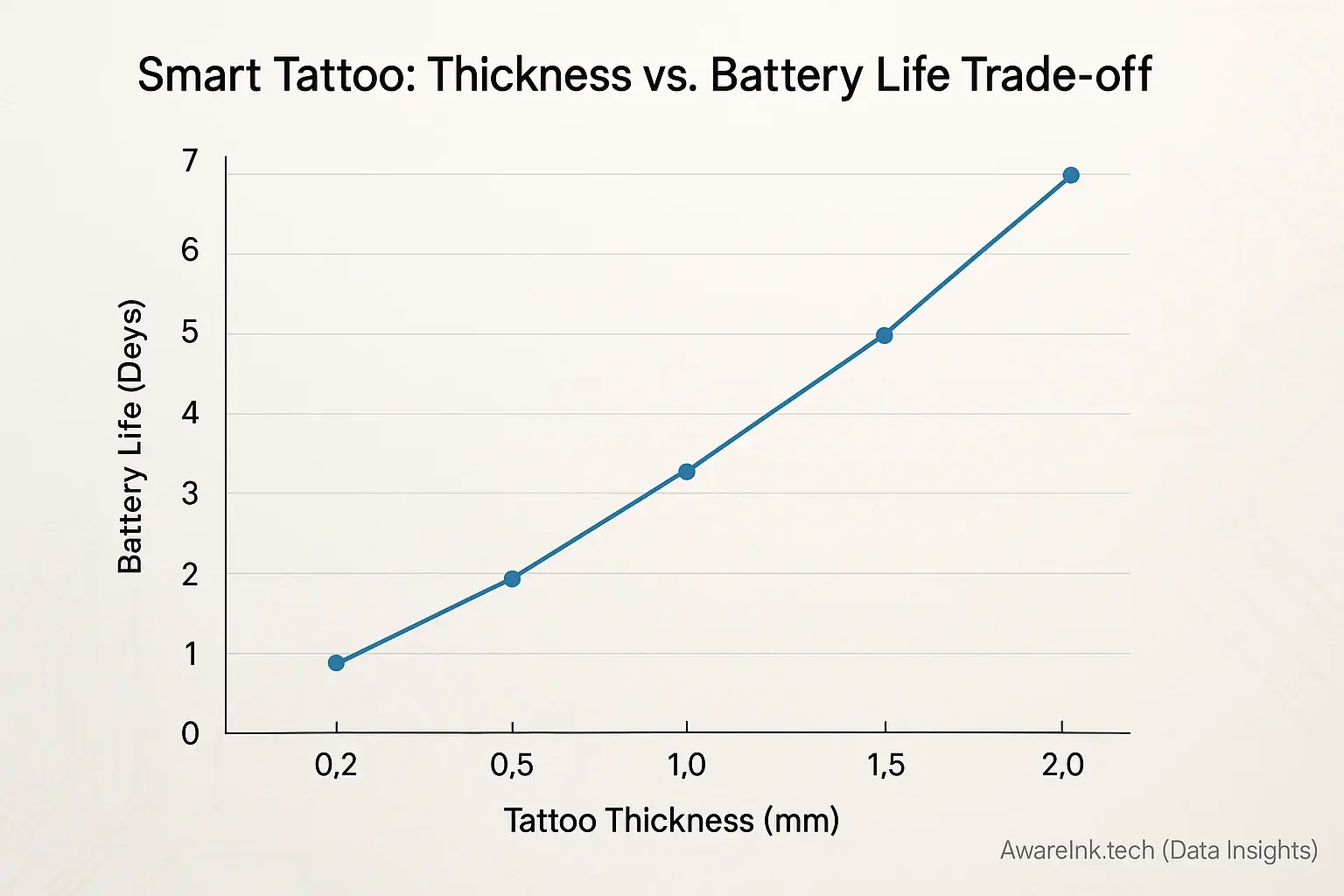
Power source choices define smart tattoo usability. A tattoo's sleek design conflicts directly with its need for substantial, lasting energy. No one wants a mood tattoo that dies midday. But a bulky battery undermines the 'smart skin' aesthetic and comfort. This balance deeply affects daily wear.
AwareInk.tech's research highlights a critical, frequently ignored, aspect: battery lifespan in semi-permanent wearables. All batteries degrade. Eventually. Replacing a power cell within a skin-adhered device presents considerable practical and design hurdles. This raises serious questions about true device longevity and the potential for increased electronic waste. Early adopters must weigh this.
Overcoming current power limitations demands significant technological advancement for smart tattoos. Innovation is absolutely essential here. AwareInk.tech anticipates breakthroughs in flexible solid-state batteries offering better energy density and safety. More efficient energy harvesting from body heat or motion could also extend operational life. Micro-fuel cells show some promise.
The widespread acceptance of mood-adaptive smart tattoos hinges on resolving these power challenges. Seamless power delivery is non-negotiable. Users expect devices that integrate effortlessly into their lives, without constant power anxiety. Reliable power unlocks true potential.

